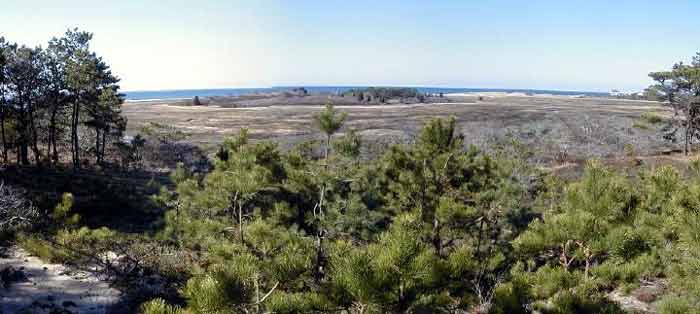More Nests Discovered and an Old Fatality — 3 April 2001
Bright sunshine this morning broke a string of gloomy overcast that has gripped
the Cape for weeks on end. The mutts and I exploited this break to scout some
new areas where we had seen terrapins heading during last year’s nesting season.
Along the wrack line beyond Lieutenant Island’s Turtle Point and behind Round
Island, there rises a bearberry hill, thickly vegetated to a depth of nearly a
foot and liberally sprinkled with beach plum and pitch pine. Turtles
negotiate this passage like porpoises in heavy surf, submerging and breaching in
waves of cresting ground cover.

Summer never afforded the opportunity to track these turtles to their nesting
site. But with blue skies and time to spare, today offered that chance.
We trudged through the bushes and focused on the only clear area immediately
surrounding a seasonal cottage atop the hillside. As we crossed a predator
trail midway to the summit, I spied two dried pleural scute bones from a large mature
female that apparently didn’t complete the round-trip nesting run.

A spot of loose soil at the edge of the cottage’s backyard decking proved
too seductive for a nesting terrapin to resist. With a warm southwest exposure,
and human scents aplenty to scare off predators, it was highly successful
too. Several egg shells had been exposed by the rainy deluge we’ve endured this last
week. I excavated two nests to recover a total of 26 hatched eggs: 14 from
one and 12 from the other.

I still marvel, though, at the stubborn endurance of tiny one-inch,
quarter-ounce hatchlings. From these nests, they forge a quarter-mile path through
walls of vegetation and a backfield of predators to reach the distant safety of their
marsh habitat.

|